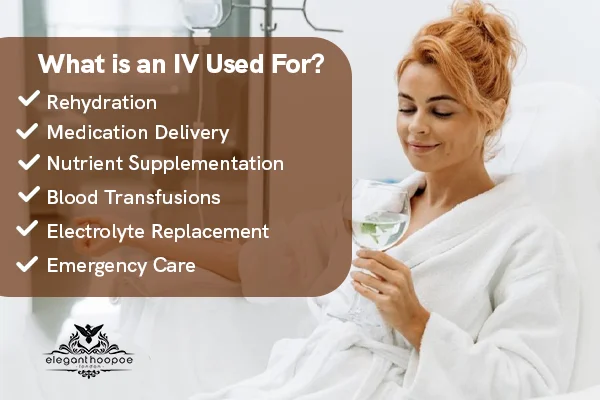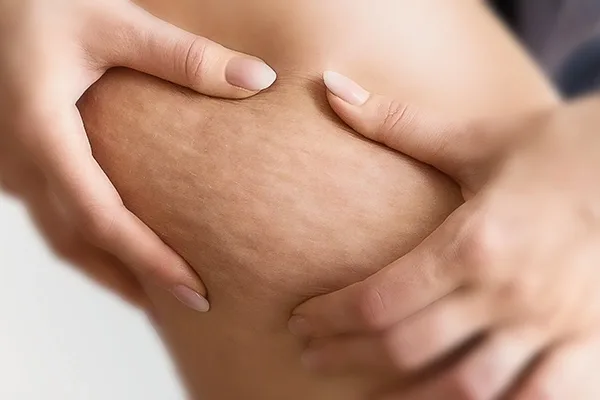What Is IV Therapy and Why Is It a Vital Part of Modern Medicine?
IV therapy—short for “intravenous”—is the direct delivery of fluids, nutrients, or medications into the bloodstream for rapid absorption and immediate effect. It’s widely used for:
Rehydration and electrolyte balance
Fast-acting medication delivery
Nutrient supplementation (especially when oral intake isn’t possible)
Emergency care and long-term treatments
Understanding the types of IVs (like drips, infusions, peripheral and central lines), IV fluids, and how they’re administered helps patients appreciate its role in both medical and wellness settings.
IV therapy comprises the administration of fluids, medication, and nutrition right into a patient’s bloodstream through a sterile intravenous line. Since it manages quick absorption and hence quick results, this method has proved very ideal for hydration, medication, and nutritional purposes. Understanding these various IV setup types, such as drips and infusions, is essential in recognizing their applications in both medical treatments and wellness practices.
Understanding the Basics

Intravenous (IV) therapy is a critical medical technique that facilitates the delivery of fluids, medications, and nutrients directly into a patient’s bloodstream. The term “IV” stands for “intravenous,” which means “within a vein.” This mode of treatment, used in most settings, becomes critical due to its general function: the substance given to the patient acts quickly and effectively.
Unlike oral medications, which undergo the digestive system for the creation of action and absorption, IV therapy bypasses all that. This makes the treatment immediately realizable and absorbed. That is why intravenous therapy becomes so crucial in cases of emergency, surgery, or when a patient is unable to take anything orally. Introduction The paper will define the basic structure of IV therapy: what it is, its constituents, types, and particular uses within a medical and wellness framework.
Related article: What is an IV drip used for
What is an IV?
It is common to have intravenous, abbreviated as IV, which consists of the administration of medication by placing a needle or even a catheter into one of the veins on the arm or hand to give liquids, medicines, or other therapeutic agents. The main function of an IV is going to be to introduce these products directly into the circulatory stream, with the guarantee of an almost immediate therapeutic effect.
It is a common technique in treating several conditions, including dehydration, infections, and nutrient deficiencies, within hospitals, clinics, and wellness centers. Wellness practices have highly employed this infusion treatment method, where hydration is improved, vitamins and minerals are delivered, and recovery from different health issues is supported.
IV Meaning
The term “IV” has its origins in Latin, where “intra” means “within” and “vena” means “vein.” Thus, “intravenous” literally translates to “within the vein.” This terminology emphasizes the method of administration, as intravenous therapy is designed to deliver fluids and medications directly into the bloodstream.
The significance of IV therapy extends beyond its name; it is a fundamental technique that revolutionizes patient care by allowing for precise control over the delivery of essential treatments. In a healthcare setting, understanding what intravenous therapy entails is crucial for both patients and healthcare providers, as it plays a significant role in patient recovery and management.
What is IV Fluid?
IV fluids are sterile liquids that are administered through an IV line to maintain fluid balance, replenish electrolytes, or provide essential nutrients. These fluids can take various forms, such as saline (sodium chloride), dextrose (sugar water), or more complex solutions containing vitamins, minerals, and medications tailored to meet the specific needs of the patient.
The choice of intravenous fluid depends on factors such as the patient’s medical condition, age, weight, and overall health status. For instance, saline solutions are commonly used for hydration, while dextrose solutions are utilized for energy supplementation in patients who are unable to eat. Additionally, IV fluids can be crucial in managing critical conditions, such as shock, burns, and severe dehydration.
IV Fluids Meaning
The meaning of IV fluids goes beyond mere hydration. They are carefully formulated solutions designed to address a variety of medical needs, including restoring electrolyte balance, delivering medications, and providing nutritional support. These fluids are essential in emergency care, surgical procedures, and routine medical treatments, as they help maintain the body’s homeostasis, especially when oral intake is not possible.
In the context of wellness, intravenous fluids are increasingly being used for vitamin infusions and hydration therapies, appealing to individuals seeking quick recovery from fatigue, illness, or dehydration. By understanding the diverse meanings and purposes of intravenous fluids, patients can appreciate the role they play in both medical and wellness contexts.
IV Line

An IV line refers to the flexible tubing or catheter that is inserted into a patient’s vein to facilitate the administration of IV fluids. This line connects the IV bag, which holds the fluid to be delivered, to the catheter in the vein. The placement of the intravenous line can be done peripherally, in smaller veins, or centrally, in larger veins near the heart, depending on the duration and type of treatment.
Peripheral IV lines are commonly used for short-term therapies, while central lines are reserved for more complex or long-term treatments. The proper placement and maintenance of an intravenous line are critical to ensure the effectiveness of the therapy and minimize the risk of complications, such as infections or phlebitis.
IV Solution
An IV solution is the liquid contained within the IV bag that is administered through the IV line. These solutions can vary widely in composition, depending on the therapeutic goal. Common types of intravenous solutions include:
- Isotonic Solutions: These solutions, such as normal saline and lactated Ringer’s solution, have a similar concentration of solutes as blood plasma, making them ideal for hydration and electrolyte replacement.
- Hypotonic Solutions: These solutions, like half-normal saline, have a lower concentration of solutes than blood plasma. They are often used to treat cellular dehydration.
- Hypertonic Solutions: Such as dextrose 5% in saline or 3% saline, have a higher concentration of solutes. These solutions can help draw fluids into the bloodstream and are often used in critical care settings. The choice of IV solution is determined by the patient’s condition, hydration status, and specific treatment requirements, making it a critical aspect of intravenous therapy.
Intravenous
The term “intravenous” encompasses all modes of treatment or procedures for the administration of medication and other substances directly into the veins. The medical fraternity welcomes this mode of treatment as it gives quick relief and is effective in the delivery of therapeutic agents.
Intravenous routes are very important in emergency medicine, where the difference between life and death can be as simple as the immediacy of the intervention. Intravenous methods bypass the digestive system, and hence medications and nutrients reach systemic circulation faster. This route enables health professionals to manage critical situations more properly.
Intravenous Therapy
Intravenous therapy includes different treatment options involving the administration of IV fluids, medication, or blood products through the intravenous line for the treatment of certain disease conditions. This ranges from the rehydration of an acutely dehydrated patient to the administration of antibiotics for infections, or chemotherapy drugs for cancer therapy.
The versatility of intravenous therapy in application makes it indispensable in modern medicine. Further, it plays an important role in the recuperation and handling of patients, particularly in critical care and surgical departments. Various wellness clinics now offer IV therapy services with intention of hydration, supplementation of vitamins, and recuperation resulting from physical exhaustion or disease.
What is an IV Used For?

The applications of IV therapy are diverse and tailored to meet specific medical and wellness needs. Common uses of intravenous therapy include:
- Rehydration: IV therapy is often used to treat dehydration due to illnesses, excessive exercise, or heat exposure. Rapid fluid replacement can restore electrolyte balance and improve overall health.
- Medication Delivery: Many medications, including antibiotics, pain relievers, and chemotherapeutic agents, are more effective when delivered intravenously, allowing for immediate therapeutic action.
- Nutrient Supplementation: Intravenous therapy can provide essential vitamins, minerals, and amino acids to patients who cannot consume food or absorb nutrients through their digestive system.
- Blood Transfusions: IV therapy is crucial for delivering blood products to patients experiencing severe blood loss or anemia, helping to restore blood volume and improve oxygen delivery to tissues.
- Electrolyte Replacement: Conditions such as kidney disease, gastrointestinal losses, or metabolic imbalances may necessitate the use of IV therapy to correct electrolyte deficiencies.
- Emergency Care: In urgent medical situations, intravenous therapy can be used to deliver lifesaving fluids and medications rapidly, making it an essential component of emergency medicine.
If you are looking for more information or intravenous services, we recommend visiting the Elegant Hoopoe website. Here, you will find a range of IV therapy in Dubai. By utilizing these services, you can enhance your health and overall quality of life.
Different Types of IVs
IV therapy can be classified into several types based on the method of administration and the duration of treatment:
- Peripheral IV Lines: These are the most common type of IVs and are typically inserted into small veins in the arm or hand for short-term treatment, usually lasting up to a few days.
- Central IV Lines: Used for long-term treatment or when stronger medications are required, these lines are inserted into larger veins near the heart and can remain in place for weeks or months.
- PICC Lines (Peripherally Inserted Central Catheter): A type of central line placed in a vein in the arm and threaded toward the heart, PICC lines are often used for prolonged antibiotic therapy or chemotherapy treatments.
- Midline Catheters: Similar to peripheral lines, these catheters extend deeper into the veins and are suitable for intermediate-duration therapies, typically lasting from a few days to several weeks.
- IV Drips vs. IV Infusions: IV drips refer to the continuous administration of fluids over a specified period, while IV infusions can be given intermittently. Both methods cater to different medical needs, and understanding the distinction helps in planning patient care effectively.
How an IV Works: Components and Function
An intravenous setup typically consists of several key components:
- IV Bag: This bag contains the fluid or medication to be administered, which can vary based on the patient’s needs.
- IV Tubing: The tubing connects the IV bag to the catheter and is designed to allow the regulated flow of fluids into the patient’s bloodstream. It usually includes a drip chamber, which helps to control the flow rate and prevent air bubbles from entering the system.
- Catheter: A small, flexible tube inserted into the vein, allowing for the direct delivery of fluids or medications.
- Drip Chamber: This component helps to visually monitor the flow of fluid and ensures that air does not enter the bloodstream, which could lead to complications.
How an IV Works: Components and Function (Continued)
- Roller Clamp: This mechanism is utilized to regulate the flow rate of IV fluid and allows healthcare providers to adjust the speed with which the fluid enters the patient’s bloodstream. With the manipulation of the roller clamp, providers can ensure that the patient receives the correct dosage according to their treatment plan.
- Needle or Catheter: The needle or catheter is inserted into a vein and acts to deliver the intravenous fluid directly into the circulatory system. A peripheral catheter is normally used in the case of short-term therapy, while a central line may be applied for long-term treatment.
How IV Therapy Is Administered
Administration of IV therapy involves a series of critical steps to ensure the safety of the patient and the effectiveness of the treatment. This begins with the selection of an appropriate site for the insertion of the IV by the health care provider, which is usually on the forearm or hand. After appropriate preparation with antiseptic solutions, a needle is inserted into the vein. On successful access, a catheter may be inserted by the provider to maintain that access without repeated needle sticks.
With the IV line in place, the provider connects the prescribed solution via an IV bag to the line. The roller clamp regulates and adjusts to achieve the appropriate administration speed of the fluid. Throughout the course of the therapy, healthcare professionals monitor the patient for signs of adverse reactions such as swelling, redness, or discomfort at the insertion site. Regular assessment is highly necessary to ensure that the intravenous line remains patent and functional, and fluid type or flow rate adjustments can be indicated in response to the patient’s evolving condition.
Benefits of IV Therapy

IV therapy offers numerous benefits that contribute to its widespread use in medical settings:
- Rapid Action: Since IV fluids are delivered directly into the bloodstream, they act much faster than oral medications, making them essential in emergency situations and critical care.
- Precision: IV therapy allows for precise control over the dosage and timing of medications, ensuring that patients receive the exact amount required for their treatment.
- Versatility: IV therapy can be customized to meet individual patient needs, making it suitable for a wide range of conditions and treatment protocols.
- Hydration and Nutrient Delivery: It effectively addresses dehydration and nutrient deficiencies, which can be critical for recovery and overall health.
- Improved Patient Comfort: For patients who struggle with oral intake due to nausea or other conditions, intravenous therapy provides an alternative route for necessary treatments, enhancing overall comfort and compliance.
Potential Risks and Considerations
While IV therapy is generally safe, there are potential risks and considerations to be aware of:
- Infection: Any time a catheter is inserted, there is a risk of infection at the insertion site. Proper hygiene and sterile techniques are essential to minimize this risk.
- Phlebitis: This condition, characterized by inflammation of the vein, can occur due to irritation from the catheter or the IV solution. Signs may include redness, warmth, or swelling along the vein.
- Fluid Overload: Administering too much fluid too quickly can lead to fluid overload, causing complications such as swelling or heart strain, particularly in patients with pre-existing heart conditions.
- Air Embolism: If air enters the IV line, it can lead to serious complications. Healthcare providers are trained to monitor for this and ensure that air does not enter the system.

Final Thought
The essentials of intravenous therapy need to be known by both a health professional and the patient. Generally speaking, it’s an important modality of modern medicine, as it introduces medications, fluids, and nutrition directly into the bloodstream. This is very helpful in acute emergencies that require immediate intervention and also for patients who require long-term treatment or cannot tolerate absorptions via the oral route.
From understanding what an IV is and its components to recognizing the different types and their specific uses, this cluster has highlighted the importance of intravenous therapy across various medical applications. With the ability to provide immediate access to life-saving medications and essential nutrients, IV therapy is a cornerstone of patient care in hospitals, outpatient clinics, and wellness centers.
Also, distinctions in the kinds of IV solutions, fluids, and varieties of IV lines explain how different situations may require variations in treatment approaches. In a fast-evolving healthcare world, knowledge of IV therapy will even better prepare patients and professionals to make informed choices in the application of treatment modalities.
Connections to the clusters on IV drip therapy and IV infusion therapy provide an overview of more general uses and benefits of intravenous treatments for those interested in further research. The basics of IV therapy will help ensure better patient outcomes but also a greater understanding of this important facet of medical care.
For those eager to delve deeper into IV services, we warmly encourage you to explore Elegant Hoopoe. With conveniently located branches in Dubai, Jumeirah, and Abu Dhabi, you can access a comprehensive array of personalized IV treatments designed to meet your unique health needs. Discover how these innovative therapies can significantly enhance your well-being and vitality by taking advantage of the exceptional services available at your closest location.






